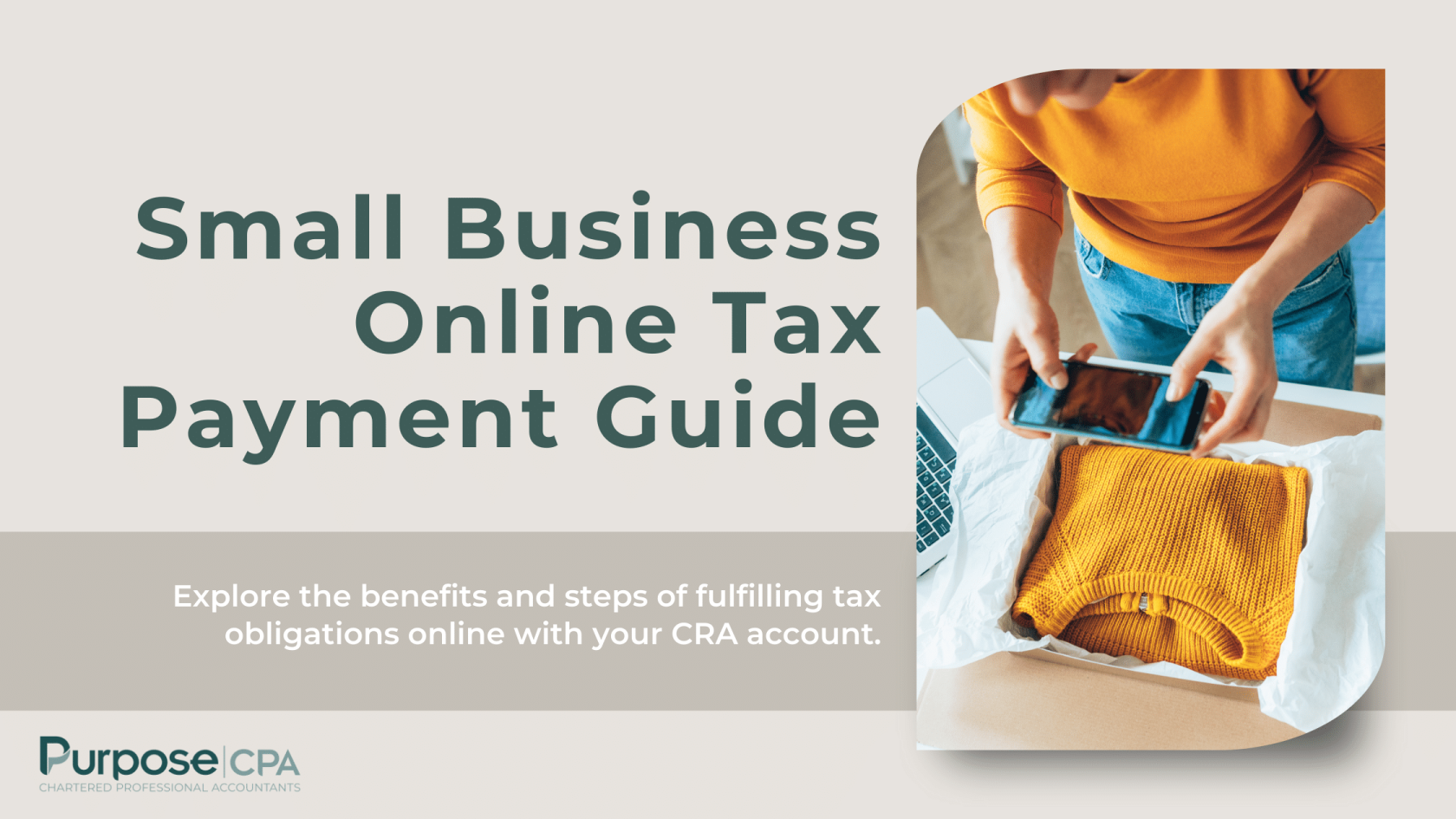As the Canada Revenue Agency (CRA) continues its digital transformation, paying your business taxes online is highly recommended. In this guide, we’ll explore the benefits and steps involved in this efficient method of fulfilling your tax obligations.
Who is it for?
- Small business owners in Canada
- Entrepreneurs in Canada
Keep reading if you are…
- Confused about how you can pay your taxes online
- New to managing your taxes online
Why does this matter to me? It is important to know how to regularly manage your CRA account and pay your taxes online correctly, ensuring timely and accurate tax payments while minimizing potential fees and penalties.
TLDR:
This guide outlines how small business owners can set up a CRA My Business Account for managing taxes online. It covers options for paying taxes through online banking, the CRA My Payment portal, pre-authorized debit, credit card/PayPal/e-transfer, or offline methods. Additionally, it explains how to authorize a representative for account access and emphasizes the importance of keeping records for future reference.
Guide to Paying Your Small Business Taxes Online
Set Up Your CRA My Business Account
There are two ways to set up:
- Register Via a Sign-In Partner: you can access the CRA using the same login details you already have, such as those for online banking. Signing up through a Sign-In Partner is a breeze, provided you already have an account with one of their authorized partners.
- Register Directly with CRA: This involves following instructions to create a CRA user ID and password. By choosing this route, you’ll gain access to the necessary tools and features for managing your business affairs effectively.
Reviewing Your Outstanding Balances
After successfully connecting your business to your account, you can access your tax details and check for any outstanding balances or pending payments that require your attention.
How to Submit Payments
To make a payment, access your CRA account and navigate to the “Payments” section. Then you can select your preferred payment method and input the desired amount. Payment options include credit card, debit card, or pre-authorized debit. Below are the primary methods for remitting taxes for your small business:
- Online Banking: Log in to your financial institution’s online banking platform and select “Add a Payee.” Enter your 15-digit business number and CRA account number. For small business banking, you may need to use the “File & Pay Taxes” option. Choose from the following options:
- Federal Corporation Tax Payments – TXINS
- Federal GST/HST Payment – GST-P
- Federal Payroll Deductions – EMPTX (PD7A)
- My Payment Portal: If you utilize a Visa Debit or Debit Mastercard for your business banking, you can utilize the CRA’s My Payment portal. Ensure your daily transaction limit allows for processing. Payments typically take one to three days to be received.
- Pre-Authorized Debit: You can establish a Pre-Authorized Debit (PAD) through your My Business Account. Click on the “Proceed to Pay” button, then select “Schedule” to set up your PAD agreement. When setting up the PAD for the first time, note that the initial date must be at least five business days from the setup date.
- Credit Card, PayPal, or E-Transfer: These payments are processed through the third-party service “PaySimply” on behalf of the CRA. Please be aware that a processing fee applies, and processing times may vary.
- Offline Payment: If you prefer traditional methods, you can request Remittance Vouchers via your My Business Account. These vouchers take up to ten business days to arrive and can be used for payments at your financial institution, a Canada Post outlet, or via mail with a cheque.
Granting Authorization for Your Accountant to Access Your Business Accounts
It’s crucial to authorize your accountant to access your CRA business accounts. This ensures timely and accurate payments.
Maintain Payment Records
Regardless of the payment method used, it’s essential to retain confirmation records for your payments. These records serve as valuable documentation in case you need to verify your payment history in the future.
In conclusion, navigating small business taxes can be a daunting task, but with the right tools and knowledge, it becomes manageable. By setting up a CRA My Business Account and exploring the payment options outlined in this guide, small business owners can streamline their tax processes and ensure compliance with Canadian tax regulations. Whether it’s utilizing online banking, the CRA My Payment portal, pre-authorized debit, or other methods, staying informed and organized is key to financial success. Remember, there are plenty of resources available to offer support and additional help every step of the way, empowering entrepreneurs to thrive in their ventures.




